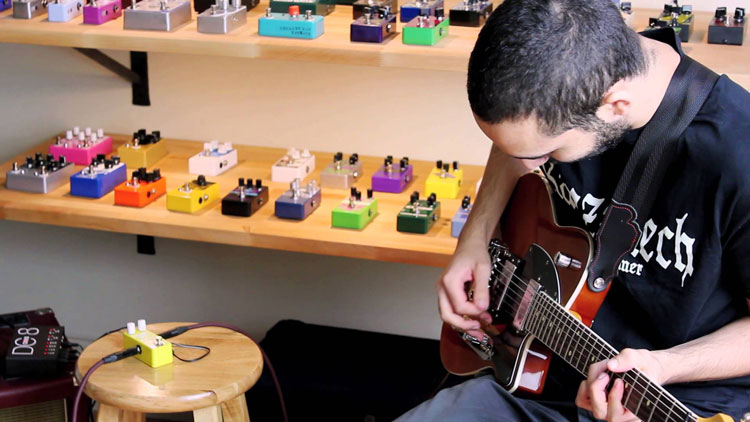- You are here:
- Home »
- Blog
- » The Missing Piece in Your Solos Vibrato

The Missing Piece in Your Solos Vibrato
Mastering the guitar solo is something we as guitar players never seem to reach, the pinnacle of playing if you will. A lot of us can play all the notes and even write complex and intriguing solos, but they still seem to miss that extra bit that pushes it over top. One of the main contributing factors in this dilemma is feel. Like I said, plenty of people can play the right notes and a solo can be pretty simple technique-wise, but it needs feel for it to still carry weight and soul. Hell, blues is mainly just the mix of major and minor pentatonic with the occasional blues or Dorian note thrown in for good measure. However, some of the most legendary players come from blues, think Stevie Ray Vaughn and BB King and more modern players such as John Mayer and Kenny Wayne Sheppard. So how do these guys play the same notes you do while connecting to your soul with such great depth and feel. To start off with, lets have a little chat about Vibrato.
Often one of the most overlooked and underappreciated skills in playing guitar, is vibrato. Many of us do it but just as would naturally without much thought or practice. This leaves our vibratos either sounding annoying and buzzy, or weak and out of tune.
The first step in improving your vibrato just like anything else, is to SLOW IT DOWN. Here is a good exercise to gauge where you are at and really start being able to control and add variety to those flourishes. Pick a note on the g string. We will start with this string because it’s the thickest out of the main three strings we bend from (Although you can bend on the D string and lower, it isn’t as common). Play the note and then bend it up a whole step, or essentially to the note two frets above it. Very slowly release the tension of your finger grasping the note just enough to bring the note down in pitch. You do not want the pitch to drop an entire half step down but to somewhere right in the middle. As soon as you hear the pitch drop re apply the pressure to the bend bringing it back up to pitch. Just keep doing this as long as the note sustains.
As a blues based player, while bending and using vibrato I like to use my thumb hung over the top of the fret board as a pivot. For a visual on where my hand specifically sits to use the thumb over technique, watch some Jimi Hendrix videos where he plays the regular E string based bar chords with his thumb on the root note.
Once you are comfortable with the pressure release system bring out a metronome and set it super slow, somewhere in the ball park of 60 to 70 bpm. As you get better slowly increase the speed. This will not only make sure to have your vibratos sit well with a groove, but also builds up a lot of stamina in your hands. The key here is to get to the point where you aren’t thinking about vibrato, but rather doing it as a natural part of your playing when you feel it. I know that last bit may sound a bit abstract to the technical based player, but it is extremely important if you want to start playing solos that emulate the feel of the greats like Hendrix and S.R.V.
At this point, I’ve only gone over vibrato after a bend. This same technique can be applied to single note non-bends as well double stops and even chords. Just like the bends, start slow and strip it down to basics until it becomes second nature. With a regular fretted note you can also incorporate the side to side vibrato. After playing a note, which can be anywhere on the neck, you can quickly move your finger ever so slightly back and forth between the frets. Especially on the higher frets above the 12th, think of it as bouncing your finger back and forth off the frets as if they are the bumpers in a bowling alley.
Take time practicing your vibrato as it is crucial to developing your own sound and style. They can take your solos to the next level, but can also crush your solo and ruin it when played without care or thought. Hope this helps all you players out there!
